Family : Serranidae

Text © Giuseppe Mazza

English translation by Mario Beltramini
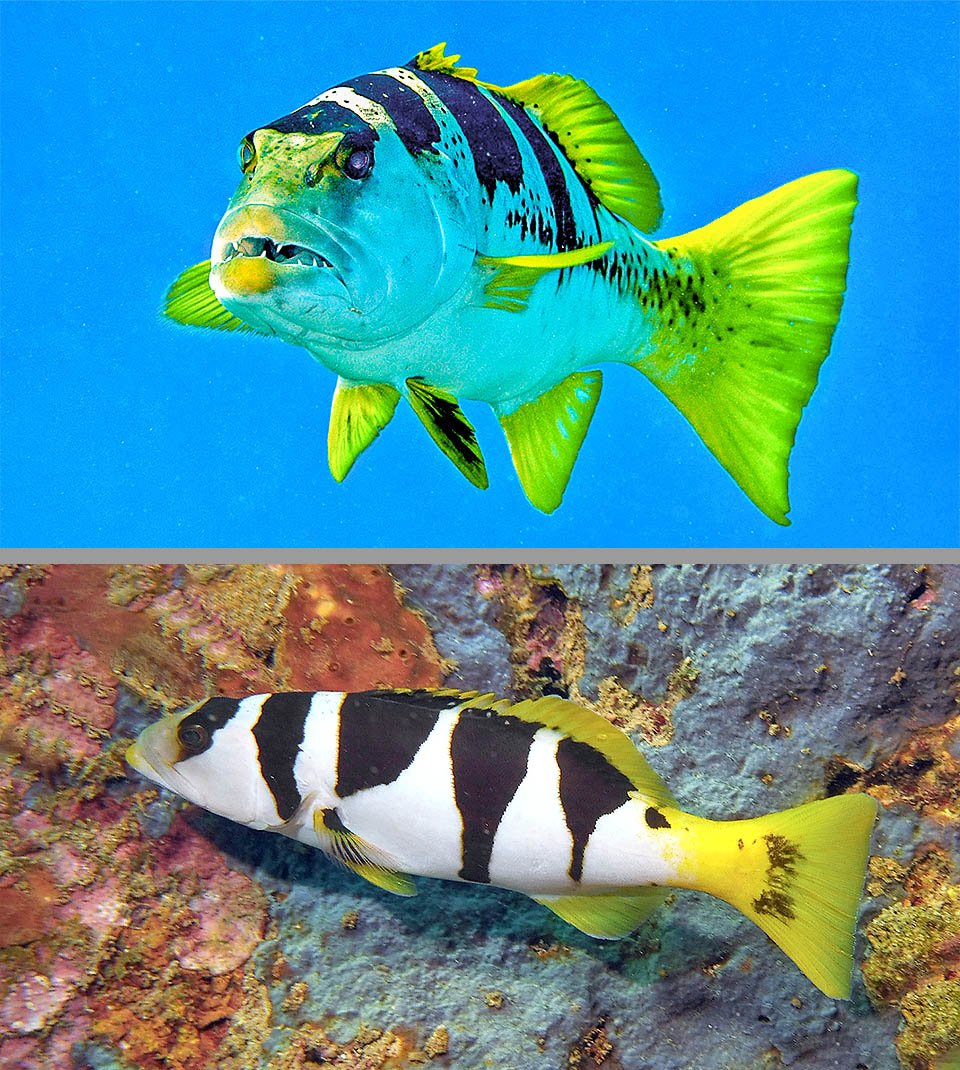
Plectropomus laevis is a grouper with two liveries. This is the “footballer” stage, with black saddles on whitish background with caudal peduncle and yellow fins © uwkwaj (up) and © Karine Marangon
Like many groupers, the Black-saddled coral grouper, Plectropomus laevis (Lacépède, 1801) has a quite changeable livery due to the action of the chromatophores and to the fact that it is a protogynous hermaphroditic species with females that while growing do transform into males.
Traditionally inserted in the family of the Serranidae, it belongs to the class of the Actinopterygii, the ray-finned fish and to the order of the Perciformes, but presently, in order to highlight its differences, some scholars place it in the suborder of the Serranoidei and in the family of the Epinephelidae, that of the groupers stricto sensu.
The genus Plectropomus, created by Oken in 1817, originates formed by the Greek “plettro”, spur, and “pomo”, cover, with reference to the ventral edge of the preoperculum having 3 large downward looking spines, mostly invisible because covered by the skin. The specific term laevis, smooth, polished in Latin, is conversely a possible reference to the scaleless area between the eyes and some opercular zones.
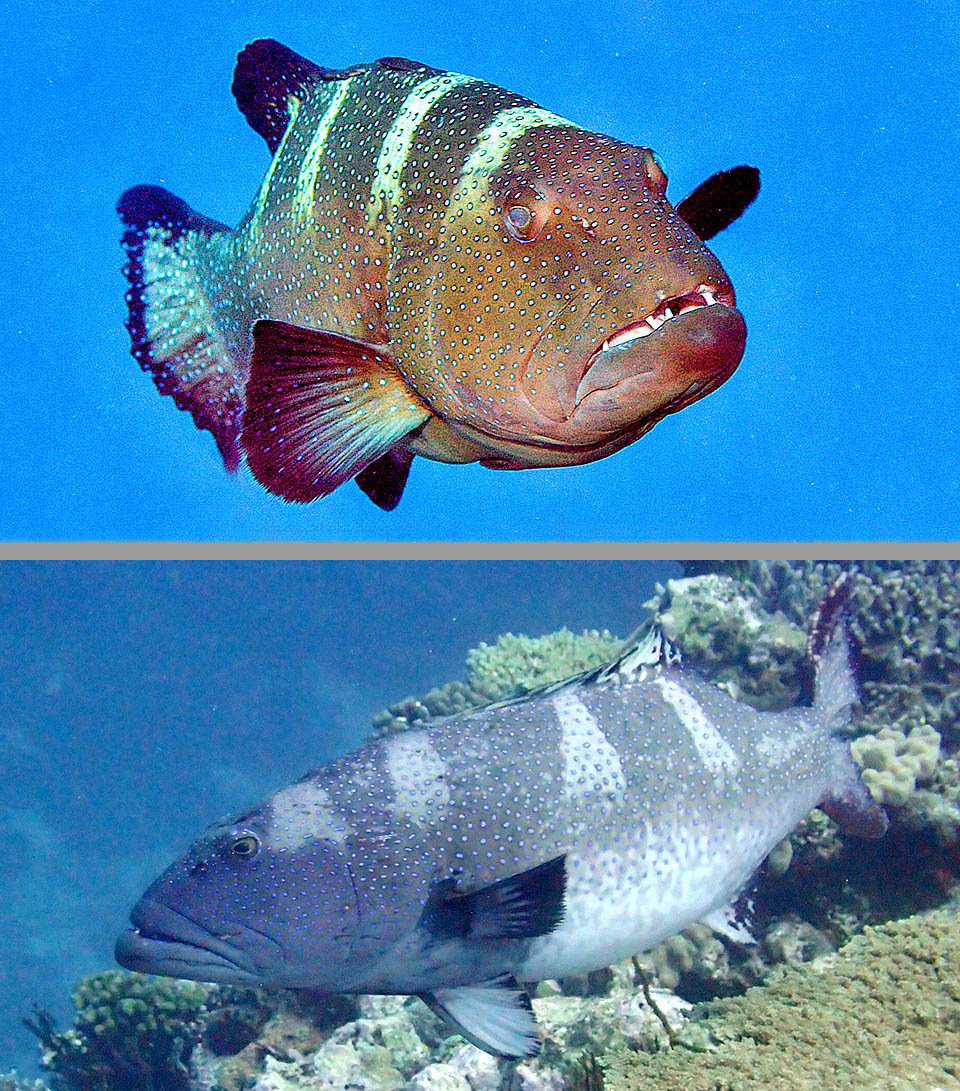
The other, reddish grey, with dark head and small blue spots with dark edge, whilst the saddles are mainly faded or absent © uwkwa (up) and © Claire Goiran
Zoogeography
Plectropomus laevis covers a very vast range in the tropical Indo-Pacific where the water has temperatures within 25,5 and 28,5 °C. We find it from Kenya to the bay of Delagoa, in Mozambique, but is absent from the Red Sea and the Persian Gulf. Then, proceeding towards the east, after Australia, it reaches French Polynesia with Tuamotu and Pitcairn and, northwards, the coasts of Japan.
Ecology-Habitat
Plectropomus laevis moves between 4 and 100 m of depth, preferring the outer side of the coral reefs. The juveniles grow in shallow waters mixed with the aggregations of Canthigaster valentini, known as Saddled puffer, they imitate, besides in the colour, by keeping the caudal fin folded. It’s an only 10 cm long small fish but with the skin soaked, like the pufferfish, in a very poisonous mucus, the tetrodotoxin, that, despite the clever precautions of the Japanese cooks, has killed some gourmet fugo, their traditional dish.

It lives the tropical Indo-Pacific where may reach 125 cm, with maximum weight of 24,2 kg and due to the chromatophores exist other fleeting chromatic variants © John Thorogood
A classic example of the so-called Batesian mimicry, that is used by harmless animals that, in order not to be attacked, do imitate in the look species dangerous or not appreciated by the predators.
Morphophysiology
The Black-saddled coral grouper, also known as Footballer cod or Blue-spot trout can reach 125 cm, with a maximum published weight of 24,2 kg, but the current length is of about 84 cm. It displays two liveries: one, known as “footballer coral trout”, with black saddles on whitish background with caudal peduncle and yellow fins; and the other, grey reddish, with dark head and small blue spots with dark edge, whilst the saddles are mainly faded or absent.
The growth of Plectropomus laevis is relatively fast. The females mature at around 40 cm in length, when about 2,2-3 years old, transforming into males only when about 8-9 years old.
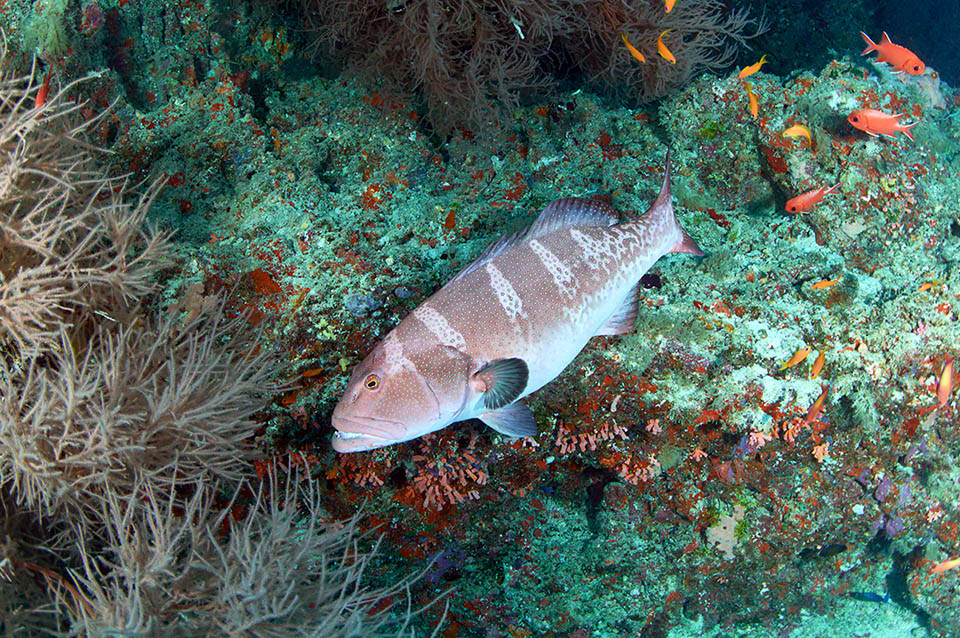
Plectropomus laevis preys mainly on fish but at times eats also crustaceans. Its flesh is excellent but in some locations is unluckily at ciguatera risk, severe, very serious food poisoning, caused by the ingestion of fish contaminated by a toxin of non bacterial origin known as ciguatoxin © Jean-Paul Cassez
The dorsal fin has 7-8 spiny rays, shorter than the 10-12 soft rays; the anal displays 3 spines and 8 unarmed rays. The spiny part of the dorsal fin has a base shorter than that with soft rays; the pectoral ones have 16-18 rays and the caudal is more or less truncated.
The anterior and posterior nostrils are inserted into a shallow furrow that starts from the eye. The ample mouth has 2 big canines on the upper jaw and 1 to 4 per each side of the lower.
Ethology-Reproductive Biology
Plectropomus laevis is a voracious piscivore that occasionally feeds on crustaceans. Its flesh is excellent but at high risk of ciguatera, severe food poisoning caused by the ingestion of fish contaminated by a toxin of non bacterial origin known as ciguatera.
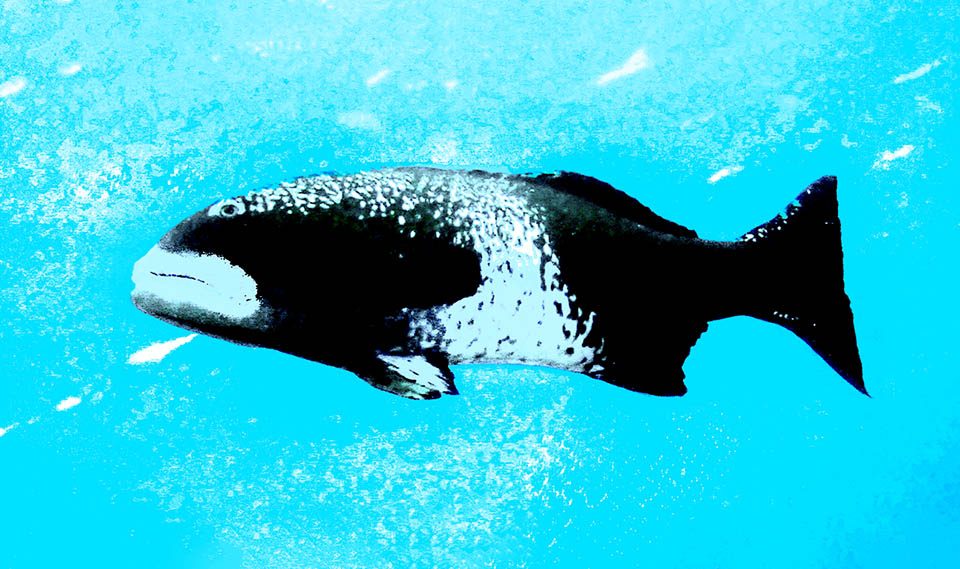
This is the male’s nuptial livery. Like other groupers, may occur some migrations but usually it is matter of modest aggregations © Claire Goiran
This toxin accumulates year after year in their tissues, all the more so since the Black-saddled coral grouper often preys on other groupers that have in turn accumulated it.
For the reproduction some aggregations take form, at times modest of about a thirty individuals, but even more than the double in the northern part of the Great Barrier Reef, with migrations in any case modest if compared to the spectacular ones, with a similar script, of Cephalopholis argus. Also here the sudden changes in livery send out important signals in the courting, with males getting black with the central part of the body candid, in stark contrast, as occurs for the lips and some frontal zones.
The planktonic eggs disperse floating just under the surface and the larvae are pelagic with a life expectancy of about 20 years.
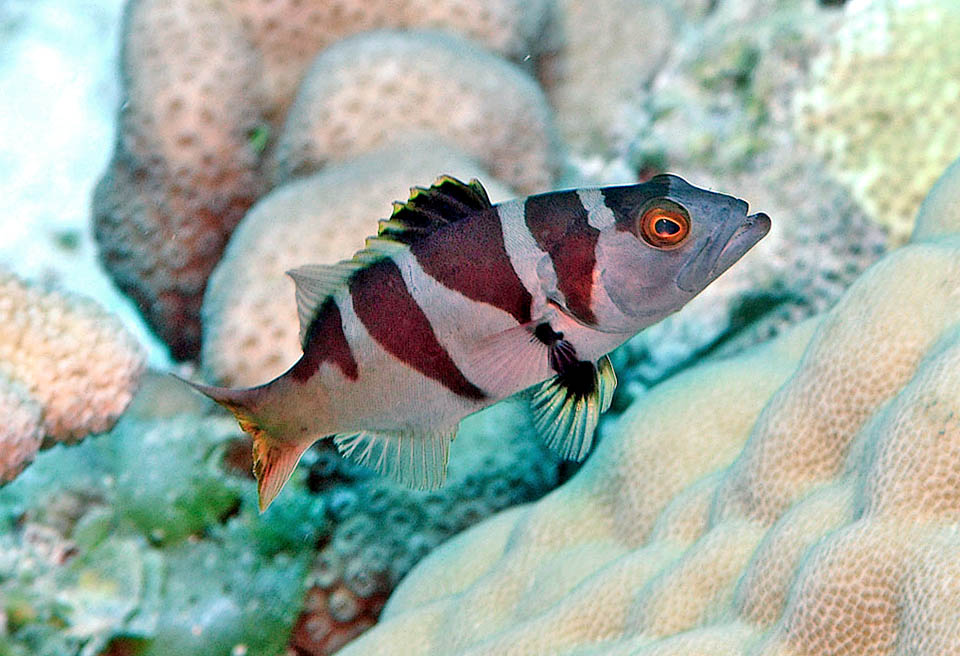
Juveniles grow mixed to aggregations of Canthigaster valentini, small 10 cm fish who imitate their colours and carrying the caudal fin folded. Like pufferfish, they are protected by a very poisonous venom, the tetrodotoxin, and so are respected by the predators who deem them mortal. A classic example of the so-called Batesian mimicry © uwkwaj
The resilience of the species is mediocre with a minimum time for the doubling of populations of 1,4 and 4,4 years and the fishing vulnerability, high, marks 61 on a scale of 100.
Little is known about the trend of the populations, but considering also the vast range from 2016 Plectropomus
laevis appears as “LC, Least Concern” in the IUCN Red List of the endangered species.
Synonyms
Labrus laevis Lacépède, 1801; Bodianus melanoleucus Lacépède, 1802; Paracanthistius melanoleucus (Lacépède, 1802); Plectropoma melanoleucum (Lacépède, 1802); Plectropomus maculatum melanoleucum (Lacépède, 1802); Plectropomus melanoleucus (Lacépède, 1802); Bodianus cyclostomus Lacépède, 1802.
→ For general information about FISH please click here.
→ For general information about BONY FISH please click here
→ For general information about CARTILAGINOUS FISH please click here.
→ To appreciate the BIODIVERSITY of BONY FISH please click here.
→ To appreciate the BIODIVERSITY of CARTILAGINOUS FISH please click here.
